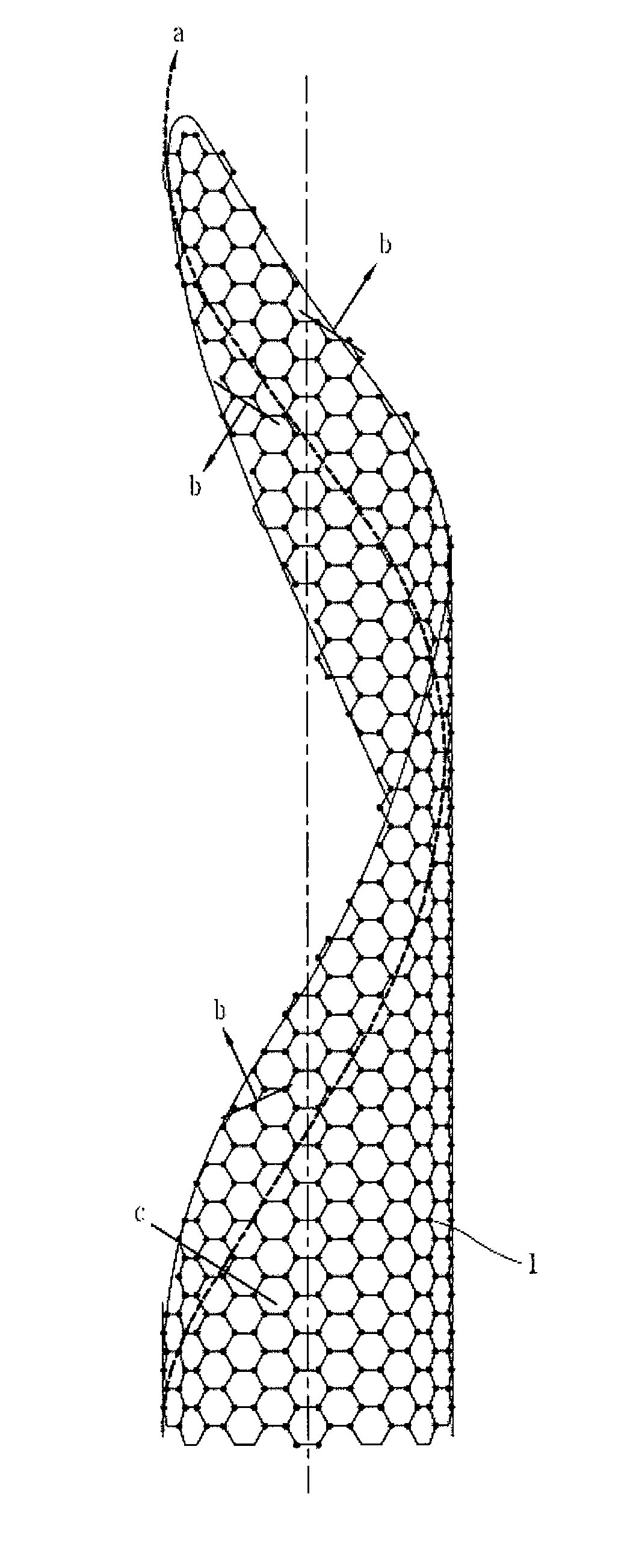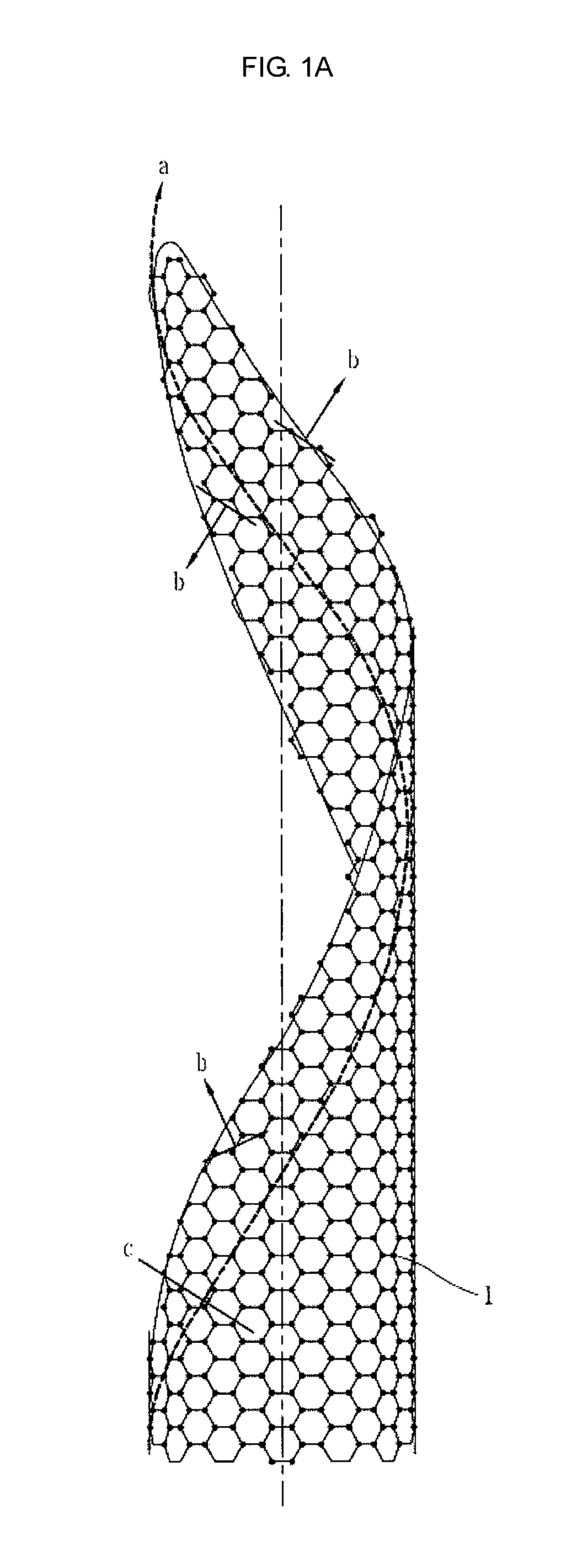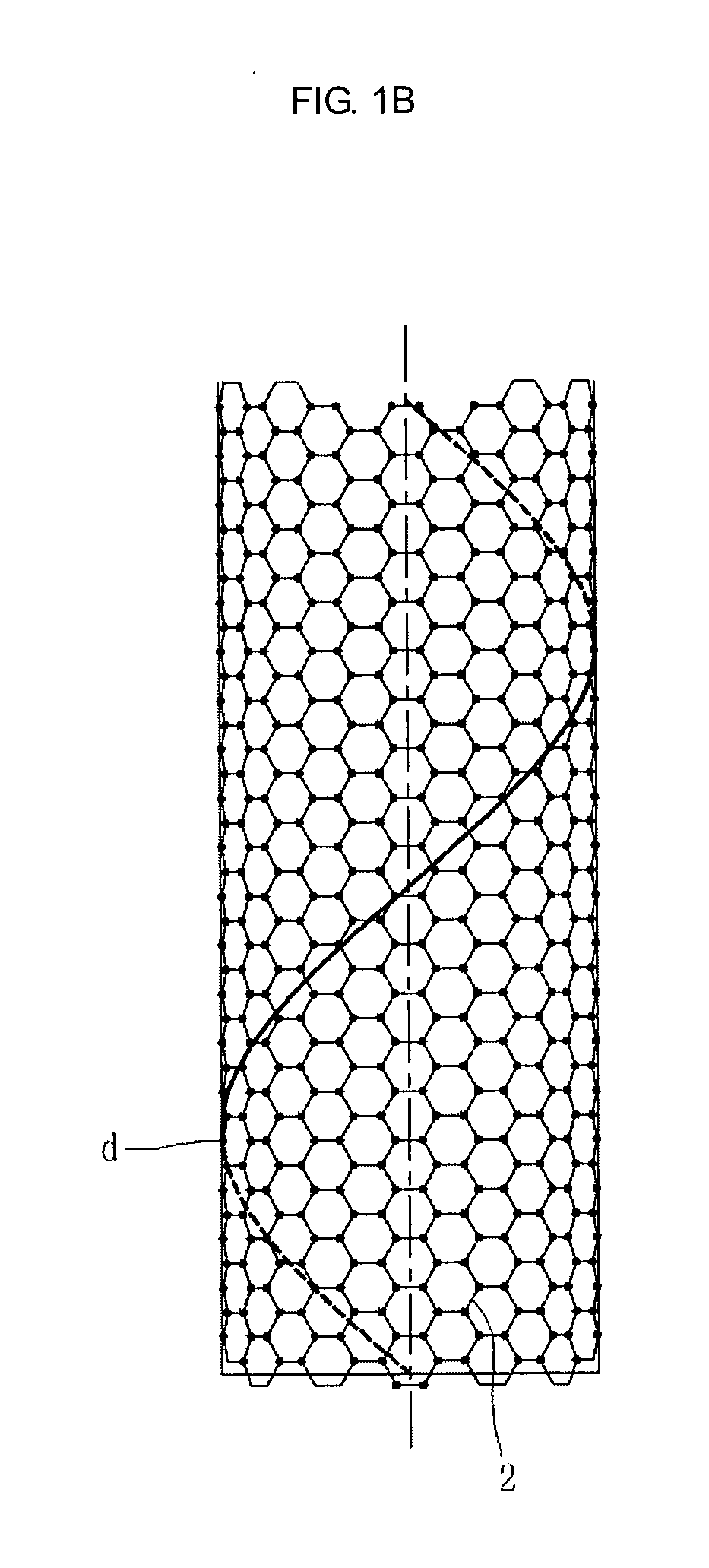Method for preparing graphene ribbons where structure is controlled
a graphene ribbon and structure technology, applied in the direction of nano-carbon, specific nanostructure formation, material nanotechnology, etc., can solve the problems of inability to fabricate graphene ribbons with zigzag (or armchair) configurations, low yield of graphene via chemical routes, and low yield of graphene for mass production, etc., to achieve simple and better physical properties.
- Summary
- Abstract
- Description
- Claims
- Application Information
AI Technical Summary
Benefits of technology
Problems solved by technology
Method used
Image
Examples
example 1
[0038]Graphene ribbons were fabricated by using a carbon structure (raw material) in which graphene ribbons having a zigzag configuration fabricated in the chemical vapour deposition (CVD) process had been spirally grown to form a tube shape. The carbon structure, which is a raw material, was 1-4 nm in diameter, and 1 μm in length. The carbon structure, which is a raw material, was treated in an ultrasonic device (power 500 W). The transformation ratio based on the ultrasonic treatment condition is illustrated in Table 1. The solution used for ultrasonic treatment was alcohol. As a result of observing the ultrasonic treatment specimen using a scanning electron microscope and a transmission electron microscope, graphene ribbons with a width of 10-25 nm and a length of less than 1 μm were obtained. As a result of analyzing the specimen with a scanning tunneling microscope (STM), it was confirmed that it had a zigzag configuration.
example 2
[0039]The carbon structure, which is a raw material as in Example 1, was cut with ball-milling for 10 minutes, and then treated for 4 hours in the ultrasonic device (power 500 W). The solution used for ultrasonic treatment was alcohol. The transformation ratio based on the treatment condition is illustrated as parentheses in Table 1. As a result of observing the ultrasonic treatment specimen using a scanning electron microscope and a transmission electron microscope, graphene ribbons with a width of 10-25 nm and a length of 50-300 nm were obtained. As a result of analyzing the specimen with a scanning tunneling microscope (STM), it was confirmed that it had a zigzag configuration.
example 3
[0040]Graphene ribbons were fabricated by applying energy to a carbon structure, which is a raw material as in Example 1. The carbon structure, which is is a raw material, was dispersed not to be layered on a ceramic substrate having a mirror surface, thereby not allowing the obtained graphene ribbons to be layered to form graphite. The specimen prepared on the ceramic substrate was placed into a high vacuum heat treatment furnace for thermal treatment. The heat treatment temperatures were changed in the range of 500-2000° C. The transformation ratio based on the heat treatment temperature is illustrated as parentheses in Table 2. As a result of observing the transformed graphene ribbons using a scanning electron microscope and a transmission electron microscope, the graphene ribbons with a width of 10-25 nm and a length of less than 1 μm were obtained. As a result of analyzing the specimen with a scanning tunneling microscope (STM), it was confirmed that it had a zigzag configurati...
PUM
 Login to View More
Login to View More Abstract
Description
Claims
Application Information
 Login to View More
Login to View More - R&D
- Intellectual Property
- Life Sciences
- Materials
- Tech Scout
- Unparalleled Data Quality
- Higher Quality Content
- 60% Fewer Hallucinations
Browse by: Latest US Patents, China's latest patents, Technical Efficacy Thesaurus, Application Domain, Technology Topic, Popular Technical Reports.
© 2025 PatSnap. All rights reserved.Legal|Privacy policy|Modern Slavery Act Transparency Statement|Sitemap|About US| Contact US: help@patsnap.com



